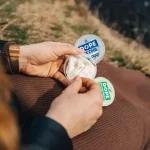Have you ever wandered through a sun-dappled forest, the air thick with the scent of pine and damp earth, and stumbled upon a treasure trove of nature’s candy? The forest floor, often overlooked, teems with life, including a dazzling array of edible fruits. But how many of us truly know what we’re looking at, what we can safely sample, and what culinary magic we can create with these wild delicacies?
Identifying Edible Treasures
The realm of forest fruits can seem daunting, a labyrinth of vibrant colors and unfamiliar shapes. How do you distinguish the delicious from the dangerous? Proper identification is paramount. Start with reliable field guides specific to your region. These guides will provide detailed descriptions, illustrations, and crucial warnings about poisonous look-alikes. Pay close attention to leaf shape, berry arrangement, flower structure (if in season), and overall plant morphology.
Consider joining a local foraging group or workshop. Experienced foragers can impart invaluable knowledge, sharing their expertise and helping you develop a keen eye for identifying edible plants. They can also teach you about sustainable harvesting practices, ensuring that these resources remain abundant for generations to come.
What are some key characteristics to watch out for? Berries with a milky sap are generally best avoided, as are those with a bitter almond scent. Red berries are often, but not always, a warning sign. Never consume any fruit unless you are 100% certain of its identification. When in doubt, leave it out.
A Forager’s Pantry; Delights from the Woods
Okay, so what kind of fruits could one realistically find? Let’s just say that 77 forest fruits are a number that only scratches the surface. We can find blueberries, raspberries, blackberries, and strawberries, familiar favorites that require little introduction. But beyond these common delights lie a wealth of lesser-known, yet equally delicious, options.
Consider the huckleberry, a close relative of the blueberry, boasting a tart, slightly tangy flavor. Or the elderberry, whose dark purple berries are best cooked and transformed into jams, jellies, or even wine. The serviceberry, also known as juneberry, offers a sweet, almond-like taste and is wonderful in pies or muffins.
And then there are the wild cranberries, smaller and more tart than their cultivated cousins, perfect for adding a zing to sauces and desserts. Don’t forget the rose hips, the vitamin C-rich fruits of the rose bush, which can be used to make teas, jams, and syrups. The options are diverse, and each offers a unique flavor profile and culinary potential.
But remember, responsible foraging is key. Only harvest what you need, leaving plenty for wildlife and allowing the plants to regenerate. Avoid trampling vegetation or disturbing the soil. And always obtain permission before foraging on private land.
From Forest to Feast; Culinary Applications
So, you’ve gathered your bounty of forest fruits. Now what? The possibilities are endless.
Jams and jellies are classic choices, preserving the flavors of the forest for enjoyment throughout the year. These can be made with a single type of fruit or a combination, creating unique and complex flavor profiles.
Pies and tarts are another excellent way to showcase the beauty and taste of forest fruits. Their natural sweetness and tartness make them ideal fillings, and their vibrant colors add visual appeal.
Why not try infusing your favorite spirits with forest fruits? Simply add a handful of berries to a bottle of vodka or gin and let it steep for a few weeks. The result is a flavorful and aromatic spirit that can be enjoyed on its own or used in cocktails.
Forest fruits can also be used in savory dishes. Add them to salads for a burst of sweetness and acidity, or use them to create sauces for meats and poultry. The tartness of cranberries or rose hips can cut through the richness of fatty dishes, creating a balanced and flavorful meal.
Respect and Responsibility
The world of forest fruits is a treasure to be cherished. By practicing responsible foraging, we can ensure that these resources remain available for future generations. Let us treat the forest with respect, harvesting only what we need and leaving no trace of our passage.
What’s the most important thing you can do? To educate yourself, respect the land, and savor the bounty of nature. Happy foraging!

